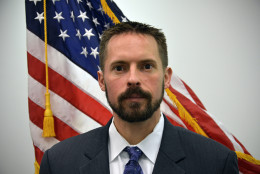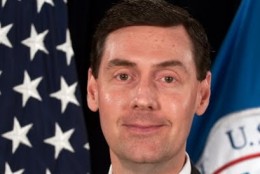Technology
-
Postal Service employees know the effects of a major cyber breach all too well. Hackers stole personally identifiable information for more than 800,000 employees back in November 2014. But the USPS Inspector General said the agency from the top to bottom wasn't prepared for the attack. Aron Alexander is the IT audit director in the Office of Inspector General for the U.S. Postal Service. He tells In Depth with Francis Rose that the agency doesn't have the staffing and the resources to handle cybersecurity functions.
July 22, 2015 -
The federal government has a trust problem after the OPM cyber breaches. Federal News Radio wanted to know what the people who were affected by the breach thought about the response from OPM and from the government overall. Federal News Radio's Emily Kopp has a preview of the survey results and she explains what we wanted to know from the people who participated.
July 22, 2015 -
UPDATED: A key Senate committee approved an amendment today to give federal employees no less than 10 years of identity and credit-monitoring services and $5 million in liability protection for related damages.
July 22, 2015 -
A new report from the Institute for Critical Infrastructure Technology cites OPM's scattered IT governance, lack of cybersecurity experts and lack of cyber threat detection technology as the major pitfalls leading to OPM's cyber breach. The Federal Drive's Tom Temin spoke with Dan Waddell, a lead contributor on the study, about what OPM needs to do to secure its systems for the future.
July 22, 2015 -
The drive to make software more and more functional may be behind what seems to be a disturbing trend towards failures in critical systems. Because of this, two problems linger with software controlled systems: they can be difficult to interact with, and in their complexity, they produce effects even expert operators can’t foresee.
July 22, 2015 -
The Office of Personnel Management is turning to the Homeland Security Department to help it set the standard for better federal cybersecurity. OPM is still recovery mode as it deals with the consequences of the biggest breach of federal employee data in history. Chris Cummiskey is the CEO of Cummiskey Strategic Solutions, a senior fellow at the Center for Cyber and Homeland Security at George Washington University and former acting undersecretary for management at DHS. He tells In Depth with Francis Rose that says DHS has five big items to tackle before it can — and should — lead the effort.
July 21, 2015 -
A new piece of cybersecurity technology is out from the Homeland Security Department's Science and Technology Directorate. The Network Mapping System tells users what's connected to their networks so they know how to protect them best. It's the third technology out of the S&T Directorate's Transition to Practice program. DHS is licensing the system to Cambridge Global Advisors in Arlington. Michael Pozmantier is in the Transition to Practice office at the DHS Science and Technology Directorate. He tells In Depth with Francis Rose how the system works.
July 21, 2015 -
UPDATED: Agencies with the largest percentage of security clearances, such as DoD, DHS and VA, will end up shouldering a huge part of the burden to pay for the credit monitoring services for 21 million current and former federal employees impacted by the second data breach. AFGE and federal officials are angered after acting OPM Director Beth Cobert tells agencies about OPM’s plans to raise its fees for security clearance services it provides in order to recoup the costs of the identity protection services it must purchase for the victims of the attack.
July 21, 2015






